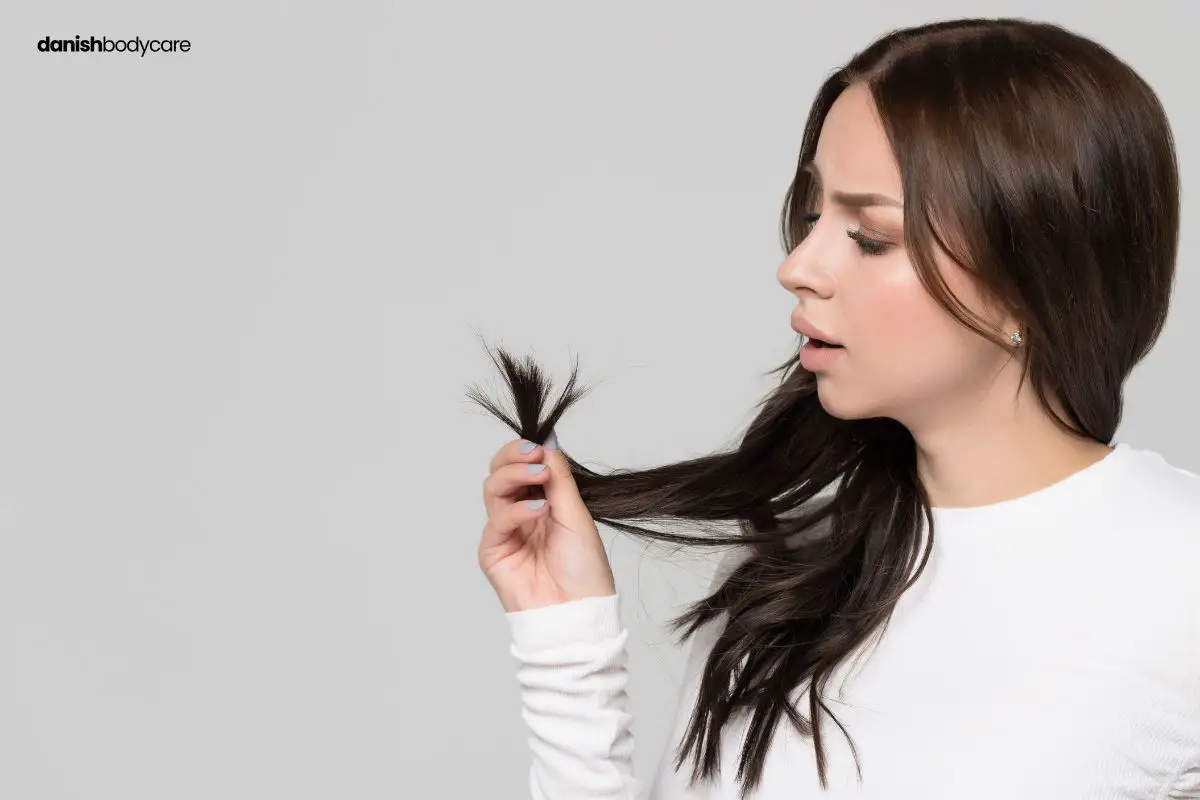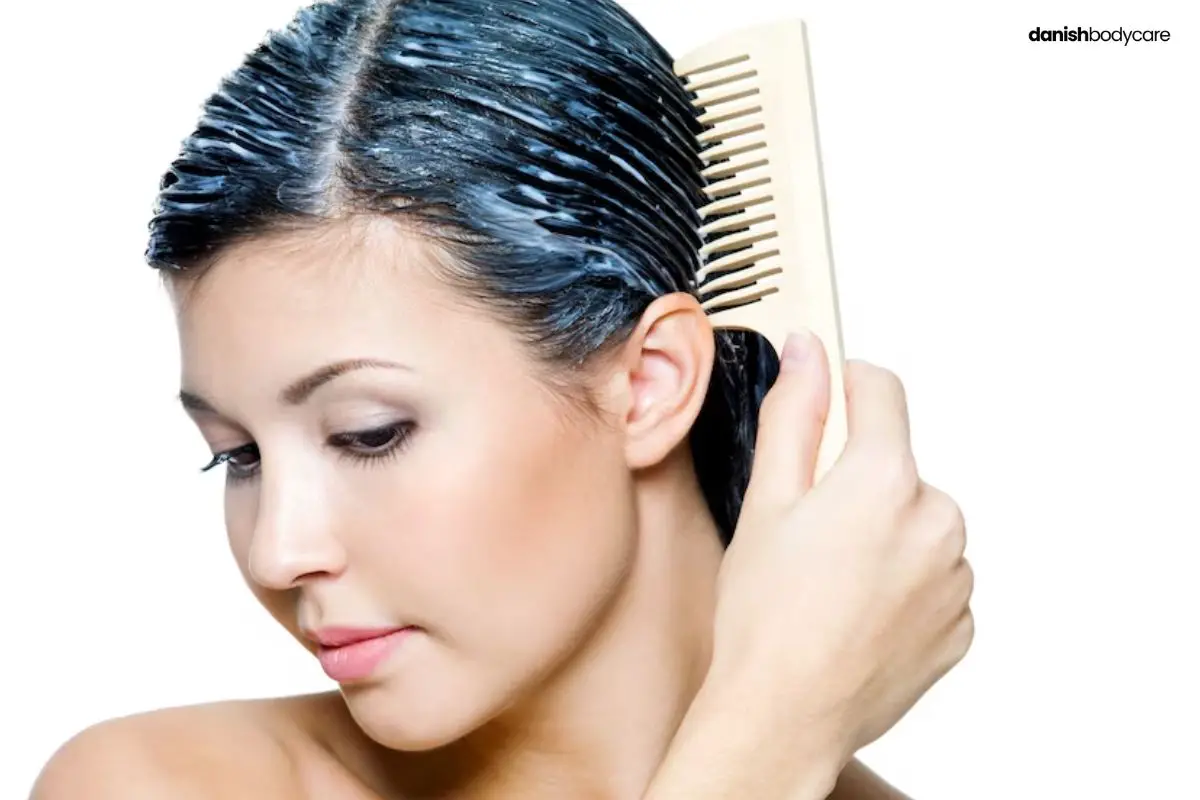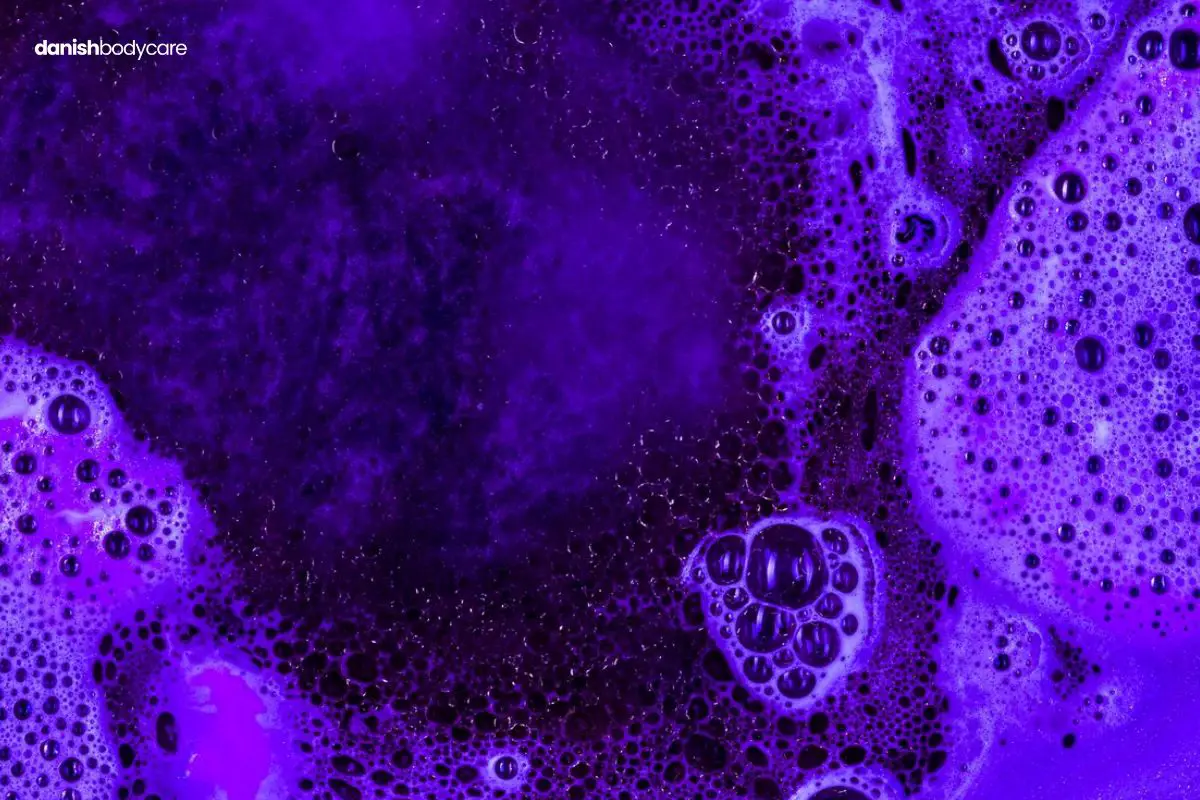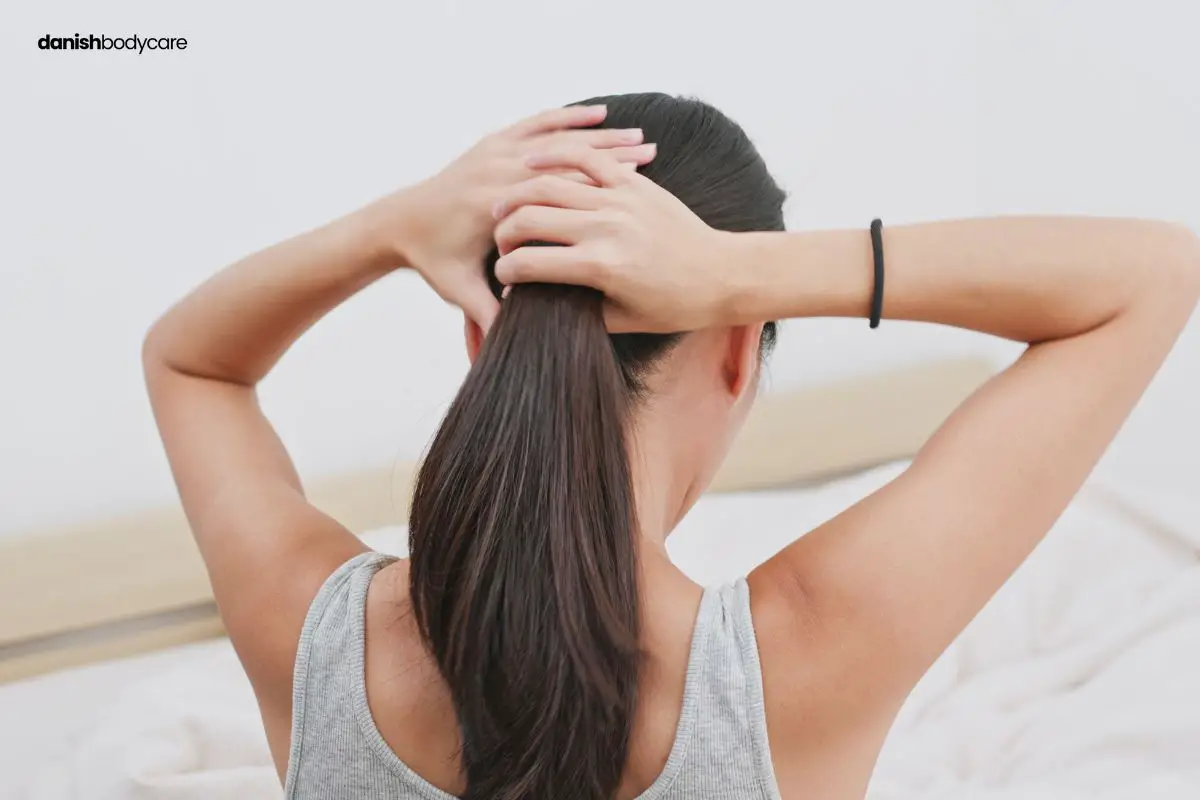Understanding low porosity hair characteristics can help you take better care of your hair. This type of hair has its own unique traits.
In fact, studies show that about 30% of people have low-porosity hair. But what does this mean?
It means your hair has a hard time soaking up and keeping in moisture. In this article, we explore these characteristics and help you identify if you have low-porosity hair. You will also find out providing tips on how to care for it.
What Is Low Porosity Hair?

Low porosity hair is hair that doesn’t absorb water or hair products with ease due to its tightly sealed hair cuticles.
This characteristic can make your hair feel dry and unmanageable, but with proper care, it can be healthy and hydrated.
What Causes Low Porosity Hair?
Some think that genetics is the main factor for low porosity hair. But that’s far from the truth.
Here are the most common causes of low porosity hair:
- Environmental factors
- Age and hormones
- Protein overload
- Lack of damage
How To Test for Low Porosity Hair
To test for the porosity of your hair, you can perform a simple “float test”.
Fill a glass with water, and place one of your clean, shed hairs into the water. Observe the hair for a few minutes to see its position in the glass.
If the hair floats toward the surface, it’s likely low-porosity hair. If the hair sinks fast, it may indicate high porosity hair.
What Is Low Porosity Hair Texture?
Low porosity hair texture can vary from being very fine to very coarse.
A common characteristic of this hair type is that the strands tend to feel smooth. This indicates packed cuticles that provide some resistance to water and product absorption.
What Type of Hair Is Usually Low Porosity?
Low-porosity hair is most often straight. However, you can find low-porosity hair in a variety of hair types.
It’s essential to know that your hair’s texture, curl pattern, or ethnicity doesn’t determine porosity levels alone. Other factors, such as genetics, play a role.
Low Porosity Hair Characteristics
Low porosity hair is a hair type with a bound cuticle layer, affecting its:
- Texture
- Porosity level
- Elasticity,
- Moisture retention capabilities.
Here are the main 13 low porosity hair characteristics:
- Moisture resistant
- Long drying time
- Product buildup
- Difficulty absorbing oil
- Sensitive to protein
- Shyniy but often dull and frizzy
- Resistant to chemical treatments
- Feels smooth but can be rough and dry
- Less elastic
- Prone to tangles and matting
- Floats in water
- Prone to split ends
- Product builds up easily on your scalp
1. Moisture Resistant
Your low-porosity hair has cuticles that lay flat and tight, making it hard for water and other moisturizing products to enter.
Thus, your hair may be more resistant to absorbing moisture. This leaves it feeling dry and prone to damage.
2. Long Drying Time
Due to its moisture resistance, low-porosity hair also takes longer to dry.
This is because the tight cuticles prevent water from leaving your hair with ease, causing it to remain wet or damp for a longer time.
3. Product Buildup
Since your low-porosity hair struggles to absorb products with ease, you may experience frequent product buildup. This makes your hair feel heavy or greasy.
4. Difficulty Absorbing Oils
Your hair may have a hard time absorbing oils. This could limit the effectiveness of some oil-based products.
To ensure proper hydration, focus on lightweight oils like grapeseed or almond oil that can penetrate the cuticles with ease.
5. Sensitive to Protein
Protein treatments can benefit some hair types. Excessive protein can make your low-porosity hair stiff or brittle.
Instead, opt for moisture-based treatments to keep your hair healthy and strong.
6. Shiny But Often Dull and Frizzy
Your low porosity hair may appear shiny due to the flat cuticles, but it can also appear dull and frizzy if it’s not moisturized as it’s supposed to.
Ensure your hair receives adequate hydration to maintain its natural shine.
7. Resistant to Chemical Treatments
Due to its cuticle structure, your low-porosity hair may be resistant to chemical treatments, such as coloring or relaxing.
This may need longer processing times or stronger solutions, but always consult a professional to avoid damage.
8. Feels Smooth But Can Be Rough and Dry
Your hair might feel smooth to the touch due to the tight cuticles, but it can also feel rough and dry if it’s not receiving enough moisture.
Use moisturizing products that cater to your hair’s needs to maintain its smoothness.
9. Less Elastic
Low-porosity hair has less elasticity, so it might be more prone to breaking or snapping.
To enhance its elasticity, use gentle styling techniques. Avoid harsh practices, such as excessive heat treatment.
10. Prone to Tangles and Matting
When not moisturized enough, your hair can tangle and mat with ease.
Use a wide-tooth comb and a good leave-in conditioner to minimize tangles and keep your hair manageable.
11. Floats in Water
Because of the tight cuticles, your hair is less likely to absorb water and will likely float in water. This unique characteristic can help you identify if you have low porosity hair.
12. Prone to Split Ends
Your low-porosity hair is more prone to split ends. Trim your hair and use products that help prevent damage, like leave-in conditioners and gentle detangling tools.
13. Product Builds Up on Your Scalp with Ease
Similar to product buildup on your hair strands, your scalp may also accumulate product residue more easily.
To avoid an uncomfortable scalp, be mindful of how much product you’re using. Cleanse your scalp on a regular basis through washes or gentle exfoliation.
Low Porosity vs. High Porosity vs. Medium Porosity
Hair porosity relates to your hair’s ability to absorb moisture. There are three types:
- Low
- Medium
- High porosity
With low-porosity hair, the cuticle layers are tightly bound, making it hard for moisture to penetrate.
High porosity hair has gaps and holes in the cuticle, allowing moisture to pass in and out with ease.
Medium porosity hair falls somewhere in between and requires moderate care.
Tips for Low Porosity Hair Care
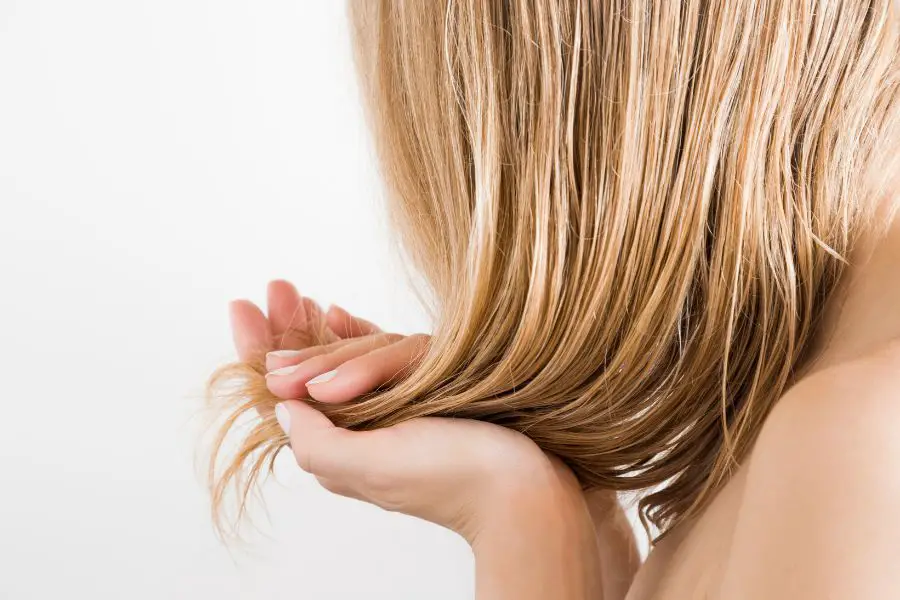
Caring for low-porosity hair can be a breeze when you follow some key recommendations.
Here are the essential tips to help you maintain the health and beauty of your low-porosity hair.
| Tip | Explanation |
|---|---|
| Choose Suitable Hair Products | Pick appropriate hair products that suit your low-porosity hair. Opt for lightweight oils and moisturizers for effective penetration. |
| Effective Hair Cleansing | Make it a routine to cleanse your hair thoroughly on a regular basis. Remove product buildup to prevent weighing down your hair. |
| Proper Moisturization | Learn to apply moisturizer properly for optimal hydration. Incorporate heat to enhance product penetration. |
| Maintaining pH Balance | Utilize products with balanced pH levels for healthy hair Aim for a pH level between 4.5-5.5 to keep cuticles smooth and moisturized. |
| Attracting Moisture | Employ humectants like honey or glycerin to attract moisture to your dry hair. |
| Even Distribution | Section your hair when applying products for even distribution. Concentrate on one area at a time for better results. |
| Regular Trimming | Trim your hair every eight to ten weeks to maintain its health. Get rid of split ends for healthier low porosity hair. |
Frequently Asked Questions
Is low porosity hair healthiest?
Low porosity hair isn’t always the healthiest. While it has a packed cuticle layer that prevents excessive moisture absorption, it struggles with moisture. The health of your hair depends on your hair care routine, diet, and genetics rather than just the porosity level.
Is low porosity hair straight or curly?
Low-porosity hair can be either straight or curly. Hair porosity is famous for its ability to absorb and keep moisture and is not determined by the hair type or texture. To maintain low porosity hair, focus on appropriate hair care techniques suitable for your specific hair type.
Is low porosity hair fine hair?
Low porosity hair isn’t synonymous with fine hair. It refers to the structure of the hair shaft and its ability to retain moisture. Fine hair refers to the diameter of the individual hair strands. Both fine and coarse hair can have low porosity, depending on the cuticle structure.
Is low porosity hair thin hair?
Low porosity hair isn’t the same as thin hair. This type of hair porosity refers to the hair’s moisture-retaining capabilities. Thin hair refers to the density and number of hair strands on your head. People with low porosity hair can have thin or thick hair depending on other factors.

